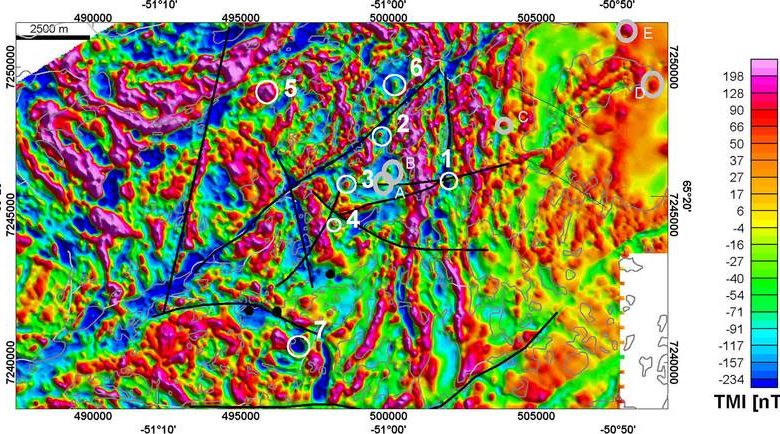All Categories
Featured
Table of Contents
Airborne Geophysical Survey: Glens Falls B '84, Vermont in Subiaco Aus 2023
Much of the image consists of blank areas now with little or no radar reaction. The "yard" wall is still showing highly, nevertheless, and there are continuing recommendations of a difficult surface in the SE corner. Time piece from 23 to 25ns. This last slice is now practically all blank, but a few of the walls are still revealing strongly.
How deep are these pieces? Unfortunately, the software application I have access to makes estimating the depth a little tricky. If, however, the leading three slices represent the ploughsoil, which is probably about 30cm think, I would think that each slice has to do with 10cm and we are just getting down about 80cm in overall.

Fortunately for us, most of the websites we are interested in lie just below the plough zone, so it'll do! How does this compare to the other techniques? Comparison of the Earth Resistance data (top left), the magnetometry (bottom left), the 1517ns time piece (top right) and the 1921ns time slice (bottom left).
Glad You Asked: What Are Seismic Surveys? in Sinagra Western Australia 2020
Magnetometry, as gone over above, is a passive method measuring regional variations in magnetism versus a localised absolutely no value. Magnetic vulnerability study is an active strategy: it is a measure of how magnetic a sample of sediment could be in the existence of a magnetic field. How much soil is evaluated depends upon the size of the test coil: it can be extremely small or it can be relatively large.
The sensor in this case is really little and samples a small sample of soil. The Bartington magnetic vulnerability meter with a big "field coil" in use at Verulamium throughout the course in 2013. Top soil will be magnetically enhanced compared to subsoils simply due to natural oxidation and decrease.
By determining magnetic susceptibility at a fairly coarse scale, we can identify locations of human occupation and middens. We do not have access to a reliable mag sus meter, but Jarrod Burks (who assisted teach at the course in 2013) has some exceptional examples. Among which is the Wildcat website in Ohio.
Geophysical Surveys Definition & Meaning In Stock ... in Hillarys Australia 2022
These towns are often set out around a central open area or plaza, such as this reconstructed example at Sunwatch, Dayton, Ohio. Sunwatch Village, Dayton, Ohio (image: Jarrod Burks). At the Wildcat site, the magnetometer study had located a variety of features and houses. The magnetic susceptibility survey assisted, however, define the primary location of occupation and midden which surrounded the more open area.
Jarrod Burks' magnetic susceptibility study results from the Wildcat website, Ohio. Red is high, blue is low. The method is therefore of fantastic use in specifying locations of general profession rather than recognizing particular functions.
Geophysical surveying is an applied branch of geophysics, which utilizes seismic, gravitational, magnetic, electrical and electromagnetic physical methods at the Earth's surface to determine the physical homes of the subsurface - Planning A Geophysical Survey: Environmental & Physical ... in Beaconsfield Aus 2020. Geophysical surveying approaches normally measure these geophysical properties together with abnormalities in order to assess numerous subsurface conditions such as the existence of groundwater, bedrock, minerals, oil and gas, geothermal resources, voids and cavities, and much more.
Latest Posts
Geophysical Survey Methods in Champion Aus 2021
Geophysical Survey - Salisbury Archaeology in Hocking Australia 2021
What Can I Do With A Major In Geophysics? in Carine Australia 2023